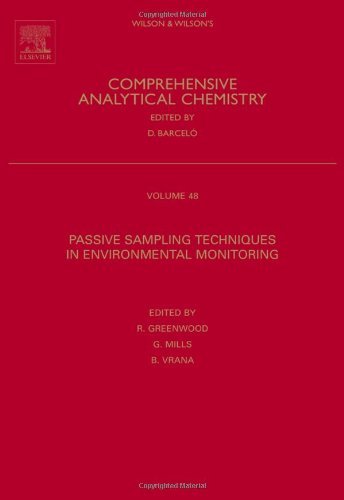
By Eli Grushka,Nelu Grinberg
ISBN-10: 1482223503
ISBN-13: 9781482223507
Presenting the most recent advancements within the box for greater than 4 a long time, the Advances in Chromatography sequence is depended on through scientists and researchers for the main up to date details on quite a lot of chromatographic tools and functions. Volume 52 keeps this practice with contributions via demonstrated, famous chemists, supplying state-of-the-art stories of chromatographic tools with functions within the existence sciences.
Featured issues include
- The heritage, improvement, and thought at the back of aerosol-based detectors
- Protein and peptide biomarkers which are chromatographic endpoints measured in organic fluids and tissues, akin to serum, urine, and tissue biopsies
- Multisegment linear gradient optimization procedure in reversed-phase and hydrophilic interplay chromatographic systems
- Enantioselective gasoline chromatography played utilizing 3 distinctive chiral desk bound levels according to hydrogen bonding, steel ion complexation, and inclusion
- Analysis of the dynamic phenomena of liquid chromatographic structures with six common reactions within the cellular phase
Providing a transparent presentation of subject matters and shiny illustrations for which this sequence has develop into identified, the most recent quantity makes the cloth available and interesting to analytical, biochemical, natural, polymer, and pharmaceutical chemists in any respect degrees of technical skill.
Read Online or Download Advances in Chromatography, Volume 52 PDF
Best analytic chemistry books
Read e-book online Passive Sampling Techniques in Environmental Monitoring: 48 PDF
Tracking pollution in air, soil and water is a regimen requirement within the office, and within the wider surroundings. Passive samplers grants a consultant photograph of degrees of toxins over a time period from days to months through measuring the typical concentrations to which they've been uncovered.
Damia Barcelo's Applications of LC-MS in Environmental Chemistry (Journal of PDF
The literature on hand, it's transparent that there's a want for a e-book on LC-MS functions in environmental research. This publication endeavours to respond to the subsequent questions: What interface to take advantage of to resolve "my detection problem"? am i able to receive sufficient sensitivity for the affirmation of my compound in real-world environmental samples?
Get Field-Flow Fractionation in Biopolymer Analysis PDF
It is a well timed number of vital biomedical purposes for a collection of separation/characterization thoughts which are speedily becoming more popular as a result of their large dynamic diversity, excessive answer, and talent to operate in most typically used solvent structures. Importantly, the field-flow fractionation (FFF) method has lately emerged as a favorite supplement to dimension exclusion chromatography for protein prescription drugs.
Download e-book for iPad: Advances in Chromatography, Volume 52 by Eli Grushka,Nelu Grinberg
Proposing the most recent advancements within the box for greater than 4 a long time, the Advances in Chromatography sequence is depended on through scientists and researchers for the main up to date info on quite a lot of chromatographic equipment and functions. quantity fifty two keeps this practice with contributions by means of tested, famous chemists, providing state-of-the-art reports of chromatographic tools with functions within the existence sciences.
- Engineering Biosensors: Kinetics and Design Applications
- Molecular Fluorescence: Principles and Applications
- Analysis of Substances in the Gaseous Phase (Comprehensive Analytical Chemistry)
- LC/MS Applications in Drug Development (Wiley Series on Mass Spectrometry)
- Mass Spectrometry for the Novice
- Biosensors and Invasive Monitoring in Clinical Applications (SpringerBriefs in Applied Sciences and Technology)
Additional resources for Advances in Chromatography, Volume 52
Example text
Advances in Chromatography, Volume 52 by Eli Grushka,Nelu Grinberg
by William
4.1


